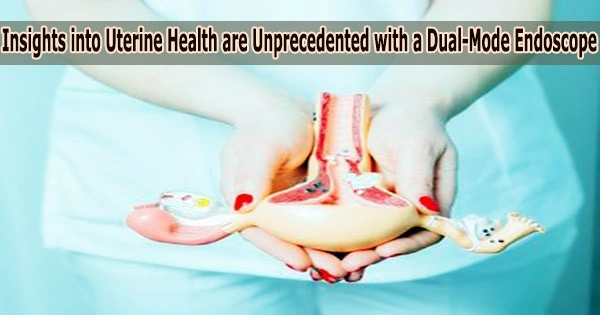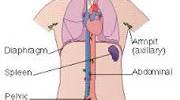A brand-new endoscope that combines ultrasound and optical coherence tomography (OCT) has been created by researchers in order to analyze structural characteristics of the endometrium, the uterine lining, in unprecedented detail.
In the future, the novel probe might enable clinicians to diagnose endometrial receptivity-related infertility issues more precisely than they can now and without performing invasive biopsies.
“This tool combines the two techniques of ultrasound and OCT, allowing it to obtain more information and provide a more accurate assessment of endometrial status than traditional vaginal ultrasound,” said research team leader Xiaojing Gong from the Shenzhen Institutes of Advanced Technology of the Chinese Academy of Sciences. “It has the potential to be used for basic endometrial research and to further advance clinical assessment of endometrial receptivity and other endometrial-related diseases.”
The researchers describe how their dual-mode endoscope can distinguish between healthy and damaged endometrial tissue in rabbit models using both surface features and depth information in the Optica Publishing Group publication Biomedical Optics Express. Using a probe that is only 1.2 mm wide, it is the first in vivo demonstration of intrauterine endoscopic imaging in small animals.
The ability of a blastocyst to implant in a uterus and develop into a healthy pregnancy depends heavily on the endometrium. Failure to implant is recognized as a key bottleneck in the reproductive process, with impaired endometrial receptivity accounting for about two-thirds of implantation failures.
The probe could give a less invasive technique to detect whether endometrial issues are causing infertility, which affects around 10-20% of women worldwide, as well as help to diagnosis other uterine health issues by providing extensive structural information on the endometrium.
“The system can obtain the thickness information of the endometrium, the echo pattern of the endometrium and information about damage to the endometrial surface, which play an important role in the evaluation of endometrial receptivity,” said Gong. “It also has the potential to detect diseases in the uterus, such as endometrial cancer and uterine fibroids.”
The variance is too large, and it is difficult to distinguish the degree of injury through a single mode of information. However, combining the information of the two modalities can differentiate the degree of damage.
Xiaojing Gong
Creating a better probe
Biopsies, which include surgically removing and evaluating a tiny tissue sample, are currently the gold standard approach for determining endometrial receptivity. Although endoscopic imaging is a less invasive technique, the current endoscopes can only detect major uterine abnormalities such anatomical deformities or polyps and cannot evaluate the endometrium’s structure.
A vaginal ultrasound can reveal details about the endometrium’s thickness and other structural characteristics, but it lacks the resolution and contrast necessary to fully evaluate endometrial receptivity.
OCT is an imaging technique that uses relatively long wavelength light (commonly known as near infrared light) to produce high-resolution images from within scattering media. It has been modified for diagnostic instruments in a number of medical specialties, including as dermatology, cardiology, and ophthalmology. According to earlier research, structural characteristics of the endometrium that are linked to implantation failures can be found using OCT imaging.
To integrate OCT and ultrasonic imaging in a single probe for the new investigation, researchers enhanced a prototype they had previously created. The OCT modality provides detailed information about the superficial endometrium including its surface information, while ultrasound provides insights about its full thickness.
Combining both imaging modalities yields a more accurate image of endometrial receptivity than either modality alone since numerous endometrial characteristics influence implantation success.
High-resolution imaging is made possible by the catheter’s ability to penetrate the uterine cavity through the cervix and inject water. To achieve both ultrasound and OCT mode, a number of tiny, specially made optical and ultrasonic components are assembled inside the catheter.
Single-mode fiber, which provides better resolution and less noise for the OCT mode, is another feature of the enhanced probe. In addition, once the probe was within the uterus, the researchers employed a metal coil to enable it to swivel for a 360-degree full-field of vision.
“The imaging catheter can realize the rotation and retraction scanning through the rotation-retraction unit at the rear end, and obtain the three-dimensional ultrasound-OCT image of the uterus,” said Gong.
A powerful combination
The endoscope was put to the test by the researchers by imaging the uterine lining of four sedated rabbits. While some of the rabbits were in good health, others had their endometrium washed with ethanol for variable durations of time, causing varying degrees of tissue damage.
The thickness, distribution, and surface roughness of the endometrium were all assessed individually by the researchers using OCT and ultrasonic techniques. The OCT scans demonstrated that compared to damaged tissues, healthy endometrial tissues had a smoother, more continuous surface.
In ultrasound images, the endometrium was found to be thicker in healthy tissues and thinner in areas that had been damaged. Even though each modality offered insightful data on its own, it wasn’t until the researchers merged the data from each that they could fully and precisely assess the severity of tissue injury.
“These results demonstrated the importance of bimodality in the detection of the extent of endometrial damage,” said Gong. “The variance is too large, and it is difficult to distinguish the degree of injury through a single mode of information. However, combining the information of the two modalities can differentiate the degree of damage.”
Also, the probe delivered echo patterns that were comparable to those acquired by vaginal ultrasound but with higher resolution. The images also revealed physical characteristics including 200-micron-sized polyp-like structures, confirming the probe’s capacity to spot minute lesions that might have an impact on endometrial health.
The probe’s capacity to track blood flow and gather knowledge about the vascular networks in the uterine lining would be improved with the addition of a photoacoustic mode, according to the researchers. In order to make the imaging catheter more useful for clinical application on humans, they are also striving to increase its size, resolution, and imaging range.
















